The Intel SSD 540s (480GB) Review
by Billy Tallis on June 23, 2016 9:00 AM ESTATTO
ATTO's Disk Benchmark is a quick and easy freeware tool to measure drive performance across various transfer sizes.
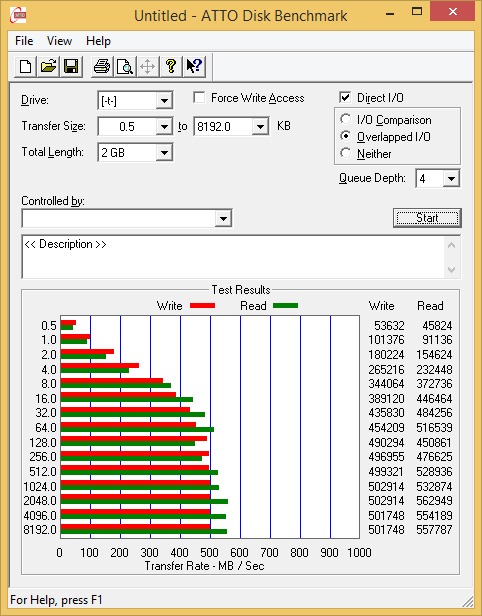 |
|||||||||
The Intel 540s's performance is a bit uneven during the ATTO benchmark, but its write speed advantage over the SP550 is still quite clear.
AS-SSD
AS-SSD is another quick and free benchmark tool. It uses incompressible data for all of its tests, making it an easy way to keep an eye on which drives are relying on transparent data compression. The short duration of the test makes it a decent indicator of peak drive performance.
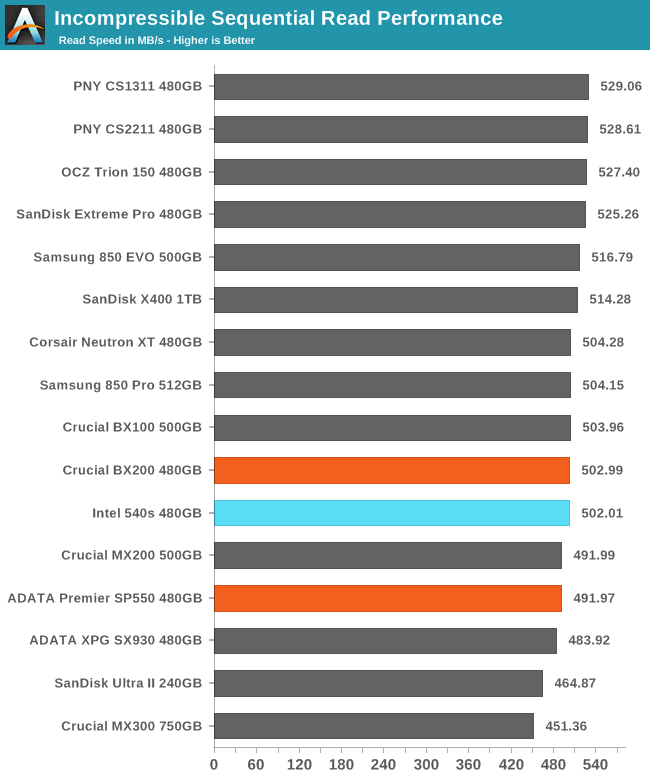
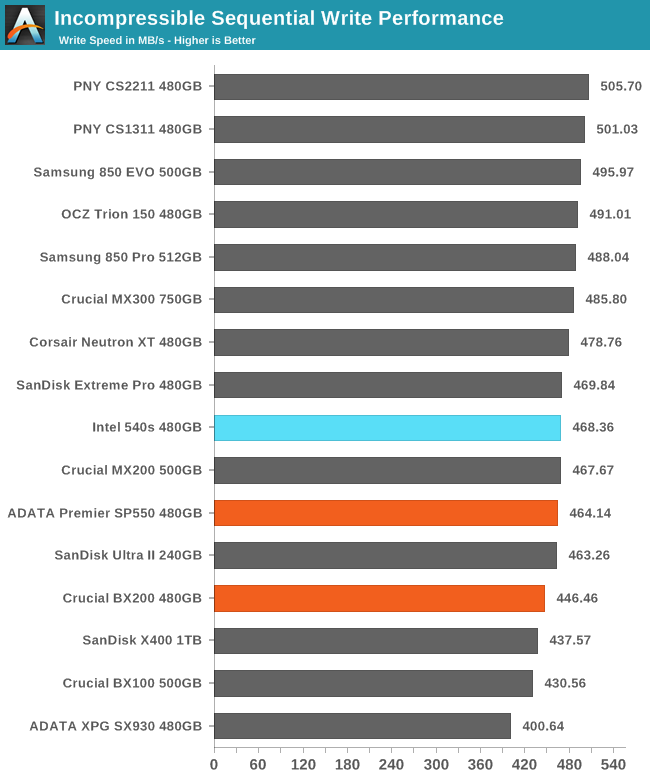
The AS-SSD test does very little to differentiate between drives, but it at least shows that the Intel 540s can reach similar peak speeds to its competition.
Idle Power Consumption
Since the ATSB tests based on real-world usage cut idle times short to 25ms, their power consumption scores paint an inaccurate picture of the relative suitability of drives for mobile use. During real-world client use, a solid state drive will spend far more time idle than actively processing commands. Our testbed doesn't support the deepest DevSlp power saving mode that SATA drives can implement, but we can measure the power usage in the intermediate slumber state where both the host and device ends of the SATA link enter a low-power state and the drive is free to engage its internal power savings measures.
We also report the drive's idle power consumption while the SATA link is active and not in any power saving state. Drives are required to be able to wake from the slumber state in under 10 milliseconds, but that still leaves plenty of room for them to add latency to a burst of I/O. Because of this, many desktops default to either not using SATA Aggressive Link Power Management (ALPM) at all or to only enable it partially without making use of the device-initiated power management (DIPM) capability. Additionally, SATA Hot-Swap is incompatible with the use of DIPM, so our SSD testbed usually has DIPM turned off during performance testing.
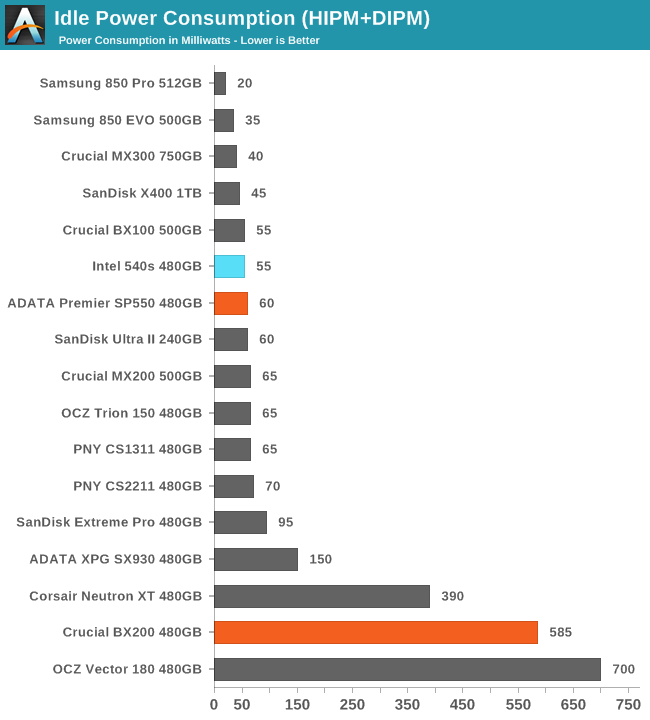
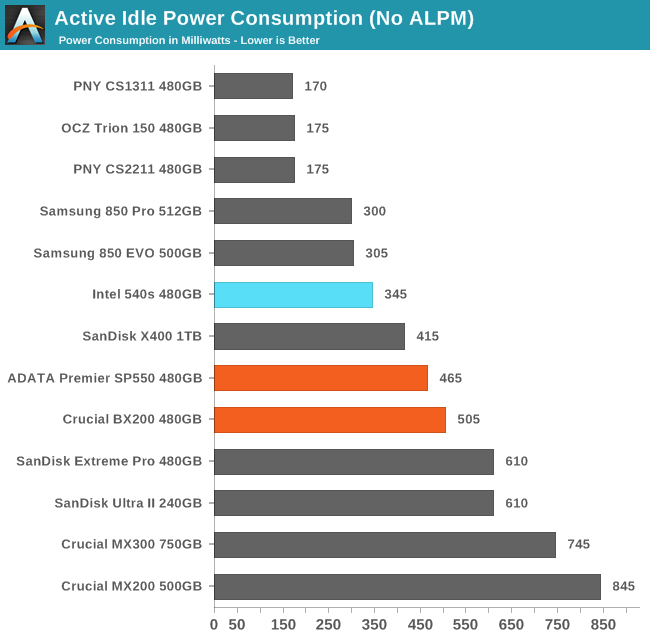
The slumber power state is working correctly on the Intel 540s and allows for very slightly lower idle power draw than the SP550. Active idle power is significantly improved over the SM2256 and is now behind only Samsung and Phison controllers. Silicon Motion's 40nm SM2258 clearly beats Marvell's 28nm 88SS1074 used in the SanDisk X400 and Crucial MX300.










77 Comments
View All Comments
Stuka87 - Thursday, June 23, 2016 - link
So disappointing. I bought up some Intel 740's because they were being discontinued. Glad I did now.prime2515103 - Thursday, June 23, 2016 - link
Did that BX200 really pull 45.69 watts in The Destroyer or is that a typo? How is that even possible?JoeMonco - Thursday, June 23, 2016 - link
The drive is broken garbage. That's how.Billy Tallis - Thursday, June 23, 2016 - link
That's Watt-hours. The Destroyer takes a typical SATA drive around 12 hours to run, so most drives are averaging a little over 1W.prime2515103 - Friday, June 24, 2016 - link
Oh I see... I'm going to have to read the testing methodology again, it's been awhile.cbjwthwm - Tuesday, June 28, 2016 - link
Did you do any re-testing of the drive with the firmware update 031C Intel released for it? It's too bad it can only be updated via ISO vs the Toolbox, and I found the ISO buggy (claimed it failed, but actually updated ok) which they have since pulled for "maintenance" ;)darkfalz - Friday, June 24, 2016 - link
Why does AT waste time reviewing a market segment where there is something like 5% noticeable difference across the board? And yet still haven't reviewed 10x0 series...vladx - Friday, June 24, 2016 - link
Guess the replacement for my Samsung 840 Evo is still going to be Sandisk X400. Intel's new SSD is a dissapointment.zodiacfml - Sunday, June 26, 2016 - link
Why? I guess, someone decided that the company should have a product at this price.fanofanand - Monday, June 27, 2016 - link
So Intel wants to charge the "Intel premium" while none of the components are Intel designed or made? Oh how the mighty have fallen. Between this drive, the $400 compute stick, and $1700 consumer CPUs, Intel is showing us just how out of touch they are with today's consumer markets.